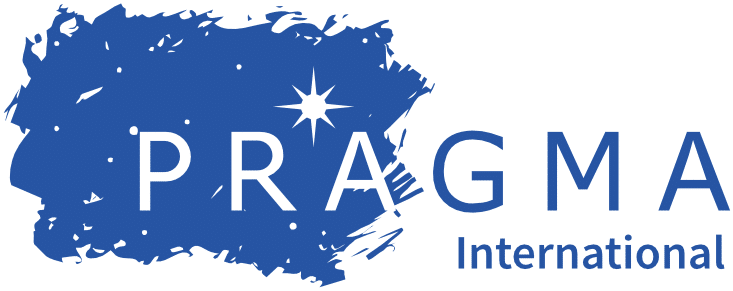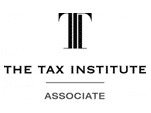By Jack Stuk (Principal and President NTAA Ltd), and Eli Bursky (Lawyer)
Many people lost millions in the Global Financial Crisis. Potentially, despite the passage of years, they may be gainfully recouped at least in part through revenue or capital losses applied against income or capital gains in the future, assuming the labyrinth of qualifying statutory conditions and tests are duly satisfied.
In the recent decision of RGGW and FCT [2017] AATA 238 (reported at 2017 WTB 9 [294]), the Taxpayer company failed in its attempt to apply its past revenue losses against approximately $5m in taxable income thereby additionally incurring substantial penalties and interest. In essence, this was due to the inadequate document retention of the type required to satisfy the conditions and tests and strategic planning for future loss recoupment.
Background
The Taxpayer company was a partner in a partnership which unsuccessfully developed a suburban shopping centre over which creditors eventually appointed receivers.
During the 1990 to 1995 financial years, the Taxpayer’s share of the revenue losses exceeded $25m.
Through 1996 to 2003, the Taxpayer applied those losses against the above taxable income and paid no tax. The Commissioner issued assessments rejecting the carry forward losses claimed as deductions and imposed penalties and interest. The matter came before the AAT when the Taxpayer’s objections were disallowed.
Under the “Continuity of Ownership Test” (COT), the Taxpayer had to show for the 1996 and 1997 financial years that the same persons beneficially owned its shares conferring a majority of voting, dividend and capital rights in the Taxpayer in both the loss year and the income (recoupment) year.
Additionally, for the 1998 and later financial years, the COT needed to be satisfied for all intervening years between the loss and income years.
The Taxpayer was owned by a complex web of related companies with the ultimate ownership of shares in them held by a series of trusts (head trusts) in which the beneficiaries were members of the Marshall (fictitious name) Family.
Compounding the above was the liquidation of one of the intermediate holding companies. This precipitated intra-group share transfers which needed detailed investigation as it had the potential to derail COT within the Group. To prove the change in shareholding did not prejudice the continuity of the majority ownership, the Group had to produce documents recording the correct transferee and related matters of one of the relevant head trusts.
Evidence on oath rejected
A Principal of the Group gave evidence on oath that a trustee of one of the head trusts was replaced by another company but the relevant documentation could not be located.
Concerning another head trust, neither the original deed nor a complete copy of it could be produced. The Tribunal accepted oral evidence that amendments were made to the original deed. However, only an incomplete version of a copy of the original deed, with hand written deletions and amendments on it, was produced as evidence to infer its original terms. Further, the AAT noted that a clause specifying the terms on which its trust fund was held and therefore dealt with income was missing. The AAT importantly noted that this was an additional significant omission from the incomplete document produced.
One of 2 lawyers who had acted for the Group over a number of years swore an affidavit confirming that even though the lawyers both held some pivotal shares in their names, the shares were in fact beneficially owned for and on behalf of the members of the Marshall Family and not for themselves. The lawyer also said the ASIC records which disclosed that those shares were actually beneficially owned by them were incorrect. The other solicitor had died and accordingly could not give evidence, further undermining the strength of the Taxpayer’s case.
Also, shares were meant to be issued within the Group as part of a restructure, which curiously were not issued until many months after the initial dealing. Another intermediate holding company disappeared from the structure due to its liquidation, which meant that beneficial ownership of its relevant shares could not be traced to help with establishing the continuity of majority beneficial ownership under COT, due to absent records.
Exact share ownership – stumbling block
The carried forward losses were also claimed in the financial years 2000 – 2003 inclusive. Those claims were dismissed readily because of the operation of s 165-165 of ITAA 1997, which commenced in the 2000 year. It requires that exactly the same interest (ie shares) and beneficial ownership be held by the same persons before the continuity of majority entitlement for the relevant financial years under COT can be established.
This did not exist and so the deductions for those years were untenable and should not have been claimed, the Tribunal said.
Long-term documentary retention requirements
At paragraph 42, the Tribunal member said “[g]iven the uncertainty as to the beneficial ownership in the 1990 loss year (owing to the gaps in the documentation and the vagueness of the witness statements and oral evidence), I am not satisfied that continuity of ownership is established between that year and either the 1996 or 1997 income year.”
Further, at paragraph 47, the Tribunal said “…. section 14ZZK does not excuse a Taxpayer from the obligation to make good its case on some satisfactory basis other than speculation, guess work or corner cutting. Even allowing for the fact that the first claimed loss year (1990) is now over a quarter of century ago, it is surely not unreasonable to expect that a case put forward in support of tax losses of almost $5m should be supported by more than assertions and broad-brush submissions. As the Commissioner noted, the Applicant was part of a large and sophisticated corporate group that would have been expected to keep proper accounting and corporate records. That it did not do so is not explained away by the effluxion of time.”
Same Business Test
Like COT changing and becoming more onerous over the relevant years, the fallback “same business test” (SBT) changed its statutory formulation over the subject period.
Under the 2 relevant tests (s 80E of the ITAA 1936 and s 165-13 of the ITAA 1997), it became necessary to determine when the change of beneficial ownership of shares in the Taxpayer occurred so that one could critically compare the exact nature of the business conducted before and after the date of change.
Briefly, because of the paucity of cogent record keeping and evidence, the exact date could not be established by the Taxpayer.
Absent that vital fact, one could not discern with certainty the nature of the business conducted by the Taxpayer before or after the change, as that date was not proven. Clearly, the Taxpayer thereby automatically failed the SBT.
Same business
Although the Tribunal didn’t need to continue with the analysis of the SBT, it chose to look at the nature of the loss company’s activities during the subject before and after years, assuming the date of change could have been accurately established. The Tribunal noted that the accounts of the Taxpayer indicated that its principal activity prior to any shareholding changes was the acquisition, development and investment of a shopping centre. It noted that after the shopping centre was sold, the Taxpayer remained dormant for a number of years until it invested in a unit trust, which in turn had intermediary interests in a number of rent-producing service stations.
The Taxpayer tried to argue that its pre-1996 business was simply a business of investment via the Partnership. The Tribunal held that a more accurate characterisation of its business was that of property development. It considered the post-1995 business was more accurately described as “investing in units in a trust”. The Tribunal found there was no element of property development involved in any of the activities undertaken after the service station investment was decided upon and made. Thus, assuming the date of change could be established, the Taxpayer was either dormant and hence conducting no business, or the business conducted before the change and after the change was not the same. This again meant the SBT could never be satisfied on the evidence produced.
The Tribunal noted that the words “same business” mean precisely that – “near similarity of kind is not enough”.
Penalties
The Commissioner had assessed administrative penalties on the basis that the Taxpayer had acted “in intentional disregard of the taxation laws”. The Tribunal held however that the lesser standard of recklessness was more appropriate. The Tribunal also discussed the interplay of provisions in the ITAA 1936 (for the 1997-2000 years) and the TAA (for the 2001-2003 years) that impose a 20% penalty uplift where penalty has applied in an earlier year but reduce penalty by 80% for voluntary disclosure (which the Taxpayer had wisely done). The Tribunal concluded that the 80% reduction applies to reduce the uplift amount under the ITAA 1936 but not the TAA.
Lessons from the case
- Document retention: it is usually difficult to establish that carry forward losses are deductible even for an individual Taxpayer, especially when the losses have been occurred over many years before those losses are applied against his or her assessable income, due to the necessity of mandatory long-term record retention of key documents.
- This difficulty is compounded where the Taxpayer is a loss company involving tracing continuity of beneficial ownership through the shares held in it via a complex chain of group entities. It is not uncommon for such records to be lost or misplaced where an insolvency administrator (eg liquidator) is involved.
- The documentary evidence has to be in place upfront before claiming the carry forward losses as allowable deductions in a tax return due to the onerous burden of proof imposed upon a taxpayer loss company by virtue of s 14ZZK of the TAA. Despite Group survival being the paramount imperative where substantial losses occur, many groups do survive and later thrive, enlivening the utility of past losses.
- SBT: Failing COT, satisfying the same business test in either of its forms as applicable is extremely difficult, even if documentary records are in order, as SBT is heavily fact centric and subjective.
- For loss trusts, it is no simpler. In fact, there is no fallback position to the same business test unless it is considered a “listed widely held trust” and otherwise satisfies the exacting eligibility requirements within Schedule 2F of the ITAA 1936. Readers will recall this was meant to apply as an anti-trust loss trafficking provision from May 1995. For a trust, the family trust election provisions may provide an appropriate safety route in appropriate factual circumstances. However, once the subject loss trust makes such an election, any distributions or shifts of value out of an elected loss trust to a non-group member attracts family trust distribution tax at the highest marginal rate.
- Close evidentiary gaps: if there are ever any evidentiary gaps for a taxpayer claiming losses extending over a considerable period of time or otherwise, the prudent course is to examine the documentary evidentiary trail in exacting detail prior to filing the subject tax returns. If doubt remains, one should consider submitting a private ruling application to the ATO and await a response prior to submitting the relevant tax returns claiming loss deductions. That should avoid substantial penalties and interest and possibly criminal sanctions when applying carried forward losses, should the ATO take issue with it under a subsequent audit.
This article was published in Thomson Reuters Weekly Tax Bulletin (Issue 010, 10 March 2017).








